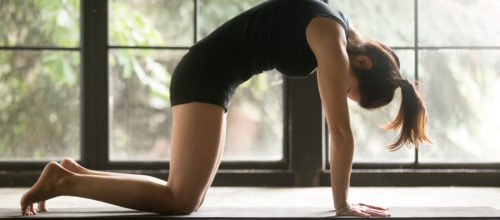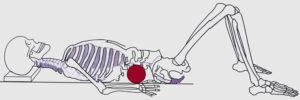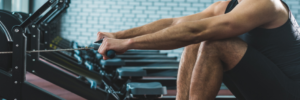
6 Exercises to Help Keep Your Low Back Healthy During Self-Isolation
Covid-19 has struck millions across the globe.
People are dying; people are losing their jobs and business are being forced to shut.
It’s not a pleasant time.
And I can say firsthand that I’m beginning to struggle with the closure of our gym, and significant restrictions placed on current online clients.
However, right now is not the time to throw your f*ucking low back out. We are in a crisis; medical resources are running low, and with more people becoming sick, it’s going to be difficult to see a health care professional.
With today’s post, I’m presenting you with 6 exercises you can do at home that don’t require any equipment and can help reduce your back pain symptoms. Many of you may be familiar with these exercises, and they can serve as a refresher for you to get back to the basics. For others, this could be your introduction to a new routine that can help with your low back pain.
1. Cat Camel
The cat camel exercise serves as an excellent warm-up exercise for the spine.
With the cat camel exercise, we are focusing on greasing (reducing friction) our spinal joints to prepare our spine for movement and loading.
To perform the cat camel, focus on the motion of moving through flexion and extension — not moving to end range. Research shows that about 6-8 cycles are sufficient (1). Note: For someone with existing flexion or existing based back pain, they may be best off skipping this exercise until symptom-free.
2. McGill Crunch
The McGill Crunch is one of the most common exercises recommended for people with low back pain.
The goal of the McGill Crunch is to build core endurance by activating and stiffening the anterior-core. People with shear intolerance, or painful micromovements — this could be a very helpful exercise.
To perform the McGill Crunch, a person starts by laying on their back with both hands placed under their low back. One leg is bent to help maintain the normal lumbar curvature. The person is then going to focus on stiffening their abdominals, followed by raising their elbows and neck slightly off the ground.
An 8-10 second hold for reps of 2-6, for sets of 1-3 is one recommendation(1), but it depends on the person’s tolerance for performing the exercise.
3. Side Plank
The side plank is another common exercise recommended for people with low back pain.
The goal of the Side Plank is to build lateral core endurance by activating and stiffening the lateral-core. People with lateral shear intolerance or painful micromovements – the side plank could be effective in reducing and preventing symptoms.
To perform a side plank, a person starts by laying on their side with their elbow directly under their shoulder. The knees can stay down, or elevated depending on the person’s tolerance and fitness level. People with a low tolerance or fitness level would be best starting with knees down.
The person is going to focus on stiffening their abdominals, followed by raising their hips while keeping their neck neutral. A 10-second hold for reps of 2-6 and 1-3 sets is one recommendation(1), but it depends on the person’s tolerance for performing the exercise.
4. BirdDog
The BirdDog is perhaps the most commonly butchered low back pain exercise. It’s rare to see a new client perform this exercise correctly. Typically, people perform the BirdDog by extending through their low back, or they let their hip drop.
The goal of the BirdDog is to challenge rotatory core stability. People with poor rotatory core stability struggle with this exercise, and often create more motion with their low back to compensate for the lack of stability.
To perform the BirdDog, a person starts by placing their hands under their shoulders and knees under hips. The abdominals should be stiffened, chin tucked, and the opposite arm and leg will extend to perform the movement. The goal is to focus on activating the back glute while resisting lumbar rotation and extension.
A 6-10 second hold for reps of 2-6 and 2-3 sets is a common recommendation(1).
5. Glute Bridge
While gluteal weakness is a common problem with people with low back pain — the bigger problem I see with the glutes is that people don’t know how to use them properly.
Clients with a history of low back pain (more specific SI Joint) that triggers during standing or running activities — I find that if we train the glutes for a few weeks, people get significant improvements, with nearly eliminating their back pain.
You have to understand that the gluteal muscles play a large part in supporting the lower portion of our spine, and if they aren’t strong or if people don’t know how to activate them properly — it can create low back problems.
To perform a glute bridge, a person starts by laying on their back with their knees bent. The knees should be separated and placed slightly wider than hip-width apart. The abdominals should be slightly stiffened — followed by the hips rising and a glute squeeze at the top. You should avoid hyperextending the low back.
A 3-10 second hold for reps of 6-10 and 1-3 sets may be a common recommendation.
6. Clamshell
To follow-up to the glute bridge, the clamshell targets the side gluteal muscles that you won’t hit with the glute bridge.
For the clamshell, a person starts by laying on their side with their arm extended to support a neutral neck position (Note: A foam roller or pillow could be used to support your neck). The abdominals should be slightly stiffened, and the top knee will rise and slowly lower.
A 3-10 second hold with reps of 6-10 for 2-3 sets may be a common recommendation. A band can be placed around the knees to make the exercise more challenging.
To Wrap-up
I know times are difficult right now.
And I can say I’m struggling, but with this post, I’m hoping that you can keep up with your low back health during these difficult times. Right now is not the time to throw your low back out while we are in a pandemic!
Salute,
Remi
Thumbnail Image Licensed from “canva.com.”
1. McGill, S. M. (2015). Back Mechanic. Gravenhurst, ON: Backfitpro Inc.











